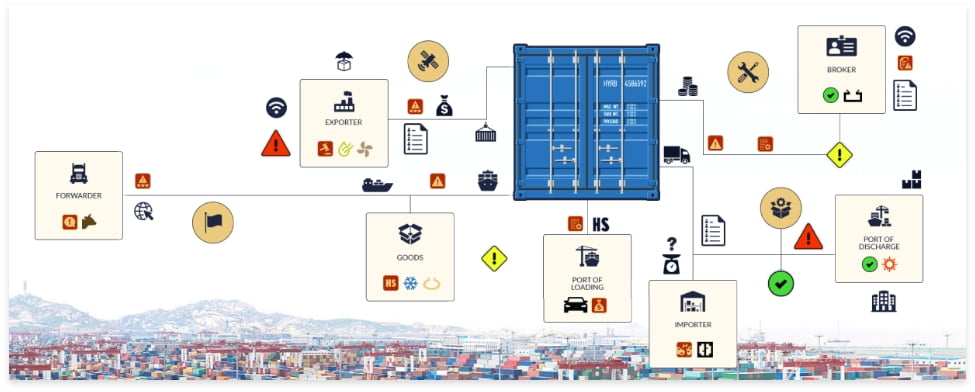Customer Success Story:
As Trade Continues Evolving, Data Remains the Ultimate Difference-Maker
While speaking about the importance of data in regulating trade might feel obvious at this point, the truth is that data takes on new impact and meaning as trade continues to become evermore complex. It used to be common practice to say just ‘let data speak for itself,’ but that’s just not the right way to look at it anymore. Data today is everywhere and a key element in the future of customs processes will be how we get the data to speak to us, how it’s collected and how it’s analyzed in order to establish trends, detect patterns, and help authorities make better business decisions.
Therefore, the data utilized to reach these decisions must be on point; it has to be essentially relevant, timely, and actionable. Aside from processing huge swells of information at scale, this means understanding how unconventional strains of data can provide highly actionable insight when we analyze them smartly. The scope of potential insight is actually much larger than perceived, so with AI and intelligence technology now allowing us to take care of all the laborious manual tasks automatically, why not expand the reach?
Analytical tools leveraging multi-dimensional data are fast becoming an integral and irreplaceable component of the Customs data ecosystem. But in today’s globalized world, popular risk management solutions using models based only on local, historical, and domestic data are limited and therefore, are limiting. They miss crucial information along the way, which hinders their ability to gain actionable insight. Models now need to add external publicly available global digital sources which reflect real-time market, regulatory and trade conditions and add a significant advantage over today’s risk management solutions and empower a new level of insight and automation. As we also know by now, circumstances can change at the drop-of-a-hat, so the use of real-time data is a crucial part of this recipe, since it allows decisions to be made fully up-to-date amidst the constant changes.

Publican’s Digital Vetting approach achieves this by utilizing unique, publicly available, and constantly updated global sources on any entity connected to a particular shipment, from real time information about traders, shippers, vessels, and brokers to the companies, locations, and facilities involved. This allows it to uncover subtle irregularities and flag risks that would have been previously overlooked. As more global and local data come into play, AI models can be sharpened, and the scenarios developed will become deeper and more accurate.
Despite national data approaches differing widely, the risks of trade such as counterfeit products and tariff evasions remain fundamentally universal, which means the data we use to facilitate it must also be equally borderless. It’s why greater regulatory coordination for the use of global data is an absolutely crucial pillar for modernizing trade, because much greater insight can be gained if we make better use of all digital corners of the globe. This creates an additional layer of complexity as customs administrations need to build capacity to contend with this use of data. This is why the private sector can be instrumental in transferring knowledge, helping the public sector better embrace the data and integrating it seamlessly into their existing systems — nurturing a culture of knowledge sharing and data capacity building within customs.
This is Publican’s approach, working together with public sectors to create a reliable and high-performing data ecosystem.
Get in touch
-
21 Soho Square London W1D 3QP, UK



